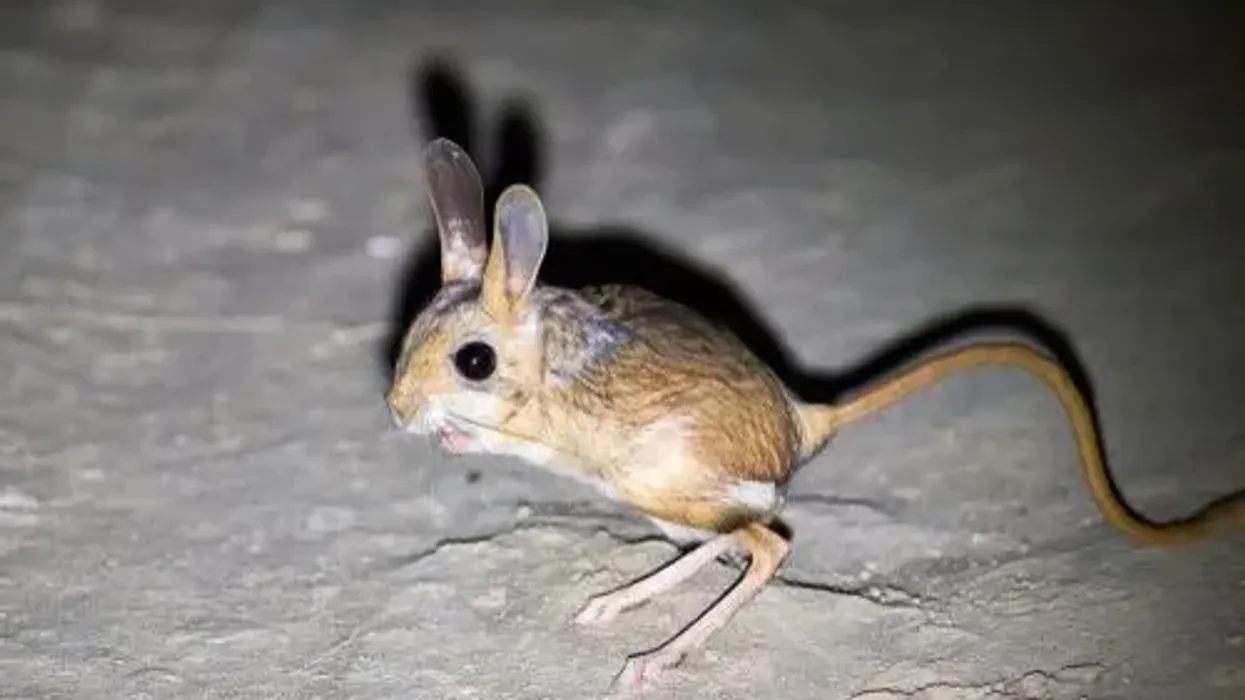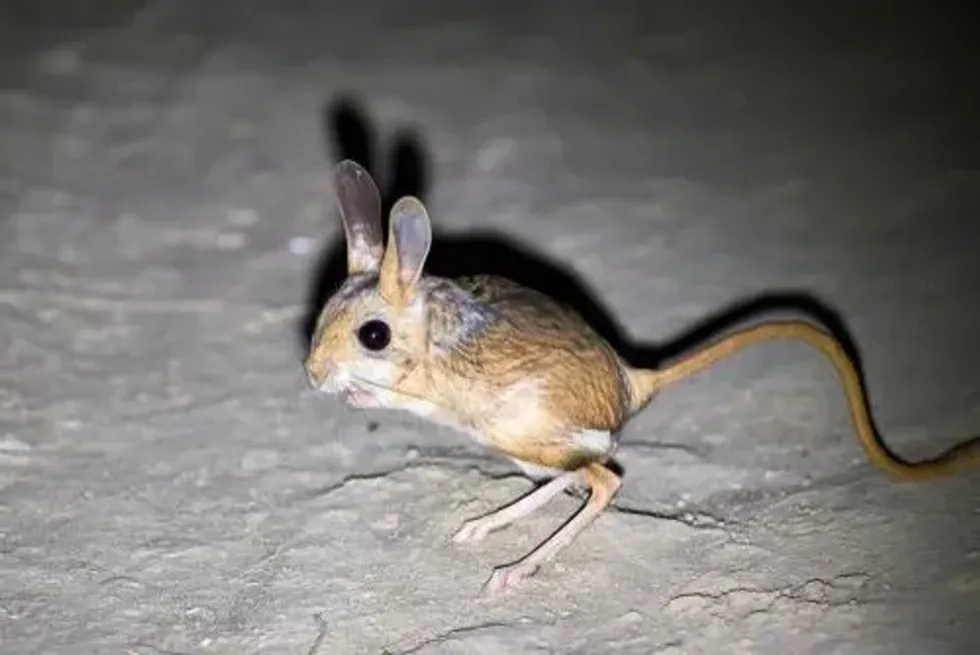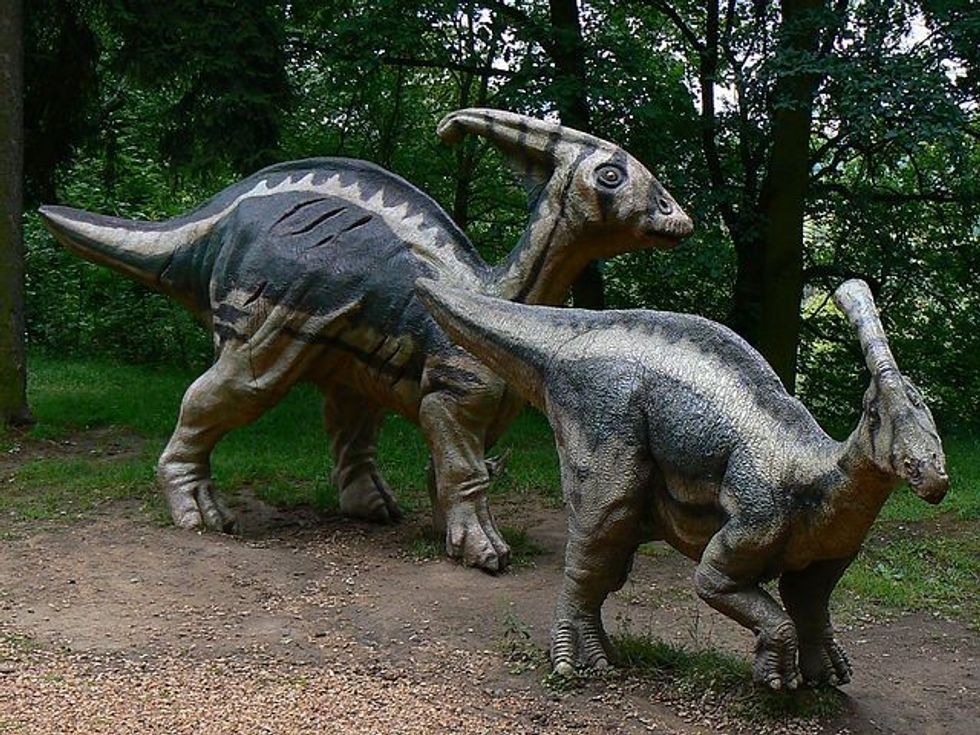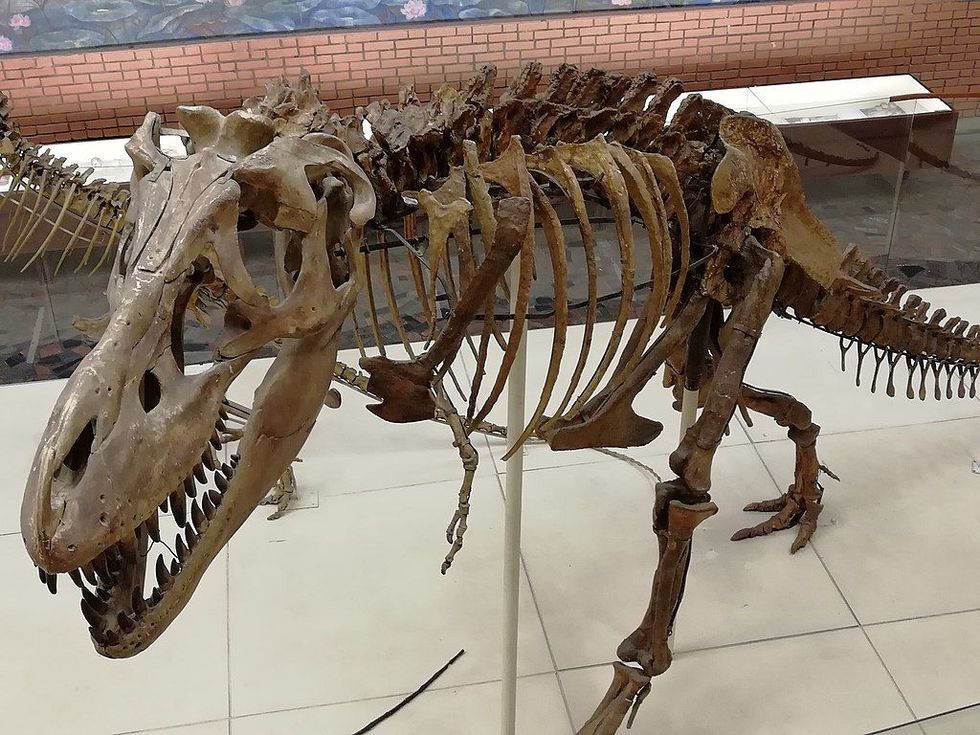If you like reading about different rodents like jerboa, then you should give this article a read. Gobi Desert jerboa is one of the most pleasant five-toed jerboa species of the animal kingdom found in central Asia.
The five-toed genus, to which the Gobi jerboa belongs, is also called the Allactaga genus. Jerboas are one of the many rodent species such as squirrels, beavers, rats, hamsters.
The remaining 32 jerboa species can be found in other temperate deserts in Africa and Asia. Jerboas' behavior is often described as being shy, withdrawn, and reserved. Because of this behavior, combined with the fact that they are a crepuscular and nocturnal species, it has been extremely difficult for researchers to gather data on these jerboa species.
If you liked what you are reading and are intrigued by these animals, you might want to read the following amazing facts about them. If you want to know more about different animals, you can read up on lesser Egyptian jerboa facts and eastern harvest mice facts for more.
Gobi Jerboa Interesting Facts
What type of animal is a Gobi jerboa?
Gobi jerboa is a species of jerboa that belongs to the family Dipodidae under the genus Allactaga and sub-genus Orientallactaga. These are commonly called five-toed rodent species.
What class of animal does a Gobi jerboa belong to?
Gobi jerboas are animals that belong to the Rodentia order under the Mammalia class, Chordata phylum.
How many Gobi jerboas are there in the world?
There isn't any available official data about Gobi jerboa's population, either from Africa or Asia. However, IUCN reports that the jerboa species are widespread but that they are irregularly distributed because of habitat fragmentation. More research regarding their population is needed.
Where does a Gobi jerboa live?
These animals live in the deserts and grasslands in Central Asia, especially in the Gobi desert in China and Mongolia.
What is a Gobi jerboa's habitat?
They prefer an arid climate like the Gobi desert in China and Mongolia. They usually build a separate burrow for each season and live there to escape predators and the extreme desert temperatures of both summer and winter. A burrow can extend up to 23 in (58.4 cm) in length.
They may build many of these while they are out foraging for food too. These burrows are usually unplugged and relatively simple.
However, during extreme temperatures in summer, they plug the opening of their burrows to stop the heatwave from entering. Jerboas usually hibernate during the winter. It is because they cannot stand the extreme coldness of the desert winter.
Who do Gobi jerboas live with?
They are one of the solitary jerboa species of the Gobi desert. Jerboas live solitarily, with each having its own burrow by the time they turn into an adult. However, they've been known to form loose colonies during extreme cold to offer warmth to each other.
How long does a Gobi jerboa live?
Gobi jerboas tend to live longer than others of their related species and the rest of the rodent species. They are estimated to live for around six years.
How do they reproduce?
Jerboas are supposed to be polygynous; this means that a male of this species might mate with multiple females. Females, however, only mate with one male. They may breed twice during the summer.
Females have a gestation period of around 25 - 35 days. They usually deliver around one to three pups in one litter. Female Gobi jerboas give birth to jerboa pups in permanent summer burrows, where they remain till they become independent.
What is their conservation status?
They are given the status of Least Concern by International Union for Conservation of Nature Red List. While the jerboas' population does not face any major threats according to the IUCN, they still face threats from a number of natural nocturnal predators.
These include owls, house cats, and jackals. Moreover, apart from the natural predators, they also face a long-term threat from habitat loss. This is one of the reasons why many environmental organizations have proposed better research on this species.
Gobi Jerboa Fun Facts
What do Gobi jerboas look like?
Gobi jerboas are very small rodents who use their fur to camouflage themselves in the sand. Their backs and outer thighs are light, sandy brown. The rest of its fur is white. They have a tiny heady, with large black eyes.
Their small faces are remarkably similar to that of a mouse. However, their most distinctive feature is the extremely long hind legs and an abnormally long tail. Unlike mouses, they use their long hind legs for the purpose of jumping, which they resort to save themselves from the predators.
They are also marked by their long ears and abnormally long tails. What is perhaps the most conspicuous feature about their body and has also earned them the name of 'kangaroo rodents' is their extremely long back legs.
Their back legs, also called the hind legs, are typically four times longer than the short front legs or arms. They do have short arms or front legs, very similar to those of prairie dogs.
However, many people fail to notice them because they are kept so close to the body that they become indistinctive. They also have cat-like whiskers, which they use to navigate through their habitat.

*Please note that this is an image of a lesser Egyptian jerboa, belonging to a related species of Gobi jerboa. If you have an image of Gobi jerboa, please let us know at hello@kidadl.com.
How cute are they?
Gobi jerboas are extremely cute because they have really soft sandy fur, which accentuates their large black eyes, which look extremely striking. Their long tail also adds to their charm.
How do they communicate?
The exact form of communication is not known; however, it is believed that, like some of the other rodents, they use dust bathing, which is a form of chemical communication, as a way to communicate. They also have long ears, which help them to perceive sounds from a distance.
How big is a Gobi jerboa?
A Gobi jerboa is 2-6 in (5-15 cm) long. While their tail can be almost, or more than, twice the length of their head and body combined, their body is still only of average size. An average mouse has a similar, though slightly smaller, length of around 2.4 to 4.3 in (6-10.9 cm).
How fast can a Gobi jerboa run?
Gobi jerboa is fast compared to rats but slow compared to squirrels. They are an average rodent species when looked at only in terms of their speed. They can run at about 15 mph (24 kph) when they're being chased.
How much does a Gobi jerboa weigh?
They weigh between 0.8-1.3 oz (22.6-36.8 g), which is a lot lesser than a pouched rat. It's about the same weight as that of a wood mouse.
What are the male and female names of the species?
Both the male and females of this species are referred to as Gobi jerboa.
What would you call a baby Gobi jerboa?
Baby Gobi jerboas are usually referred to as pups, irrespective of their sex.
What do they eat?
They are omnivorous. Their diet consists of desert plants and insects as food, although it is uncertain precisely which insects its diet includes. They derive most of their hydration from their food.
Are they dangerous?
Although not a threat themselves, they tend to be carriers of different diseases such as monkeypox, a disease that is similar to smallpox. This is why CDC (Centers for Disease Control) has banned many rodents from Africa, including Gobi jerboas, from the US.
Would they make a good pet?
No, they would not be recommended as a pet because they might cause the owner to become exposed to some diseases. Besides, they are not allowed to be taken as pets in America. Furthermore, they are a solitary and secretive species, which prefers to be left alone.
Did you know...
Gobi jerboas are named so because they are most commonly found in the Gobi desert, which extends between China and Mongolia.
While gerboas and gerbils sound similar, they belong to different groups of animals!
You can pronounce Gobi jerboa simply as 'Go-bee jer-bow-a'!
How high can Gobi jerboas jump?
Although Gobi jerboas cannot develop jumping prowess till they are 11 weeks old, they gain this skill very quickly and are famous because of it. They are usually sighted jumping about 5 in (12.7 cm), but when needs arise, they can jump up to a staggering 9 ft (2.7 m).
The Gobi jerboa's sleep and shelter
As mentioned previously, Gobi jerboas build burrows in sand. They mostly sleep in these burrows while the sun is up because they tend to be cooler. During the rainy seasons, they tend to move to the upper range. In this range, they find taller hills and build their burrows there to avoid suffocating and to save themselves from predators.
Here at Kidadl, we have carefully created lots of interesting family-friendly animal facts for everyone to discover! For more relatable content, check out these pocket gopher facts or deer mouse facts pages.
You can even occupy yourself at home by coloring in one of our free printable gobi jerboa coloring pages.
*Please note that this is an image of a lesser Egyptian jerboa, belonging to a related species of Gobi jerboa. If you have an image of Gobi jerboa, please let us know at hello@kidadl.com.










